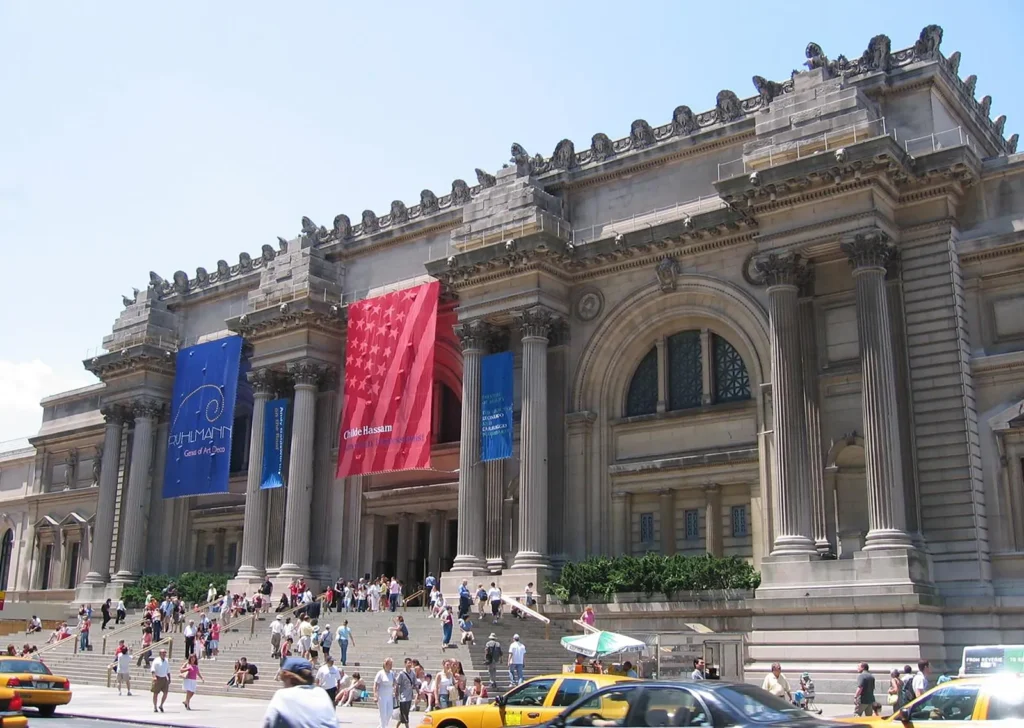Introduction
Museums are like time machines, offering us a glimpse into the past and a chance to marvel at the creativity and ingenuity of human history. Whether you’re a history buff, an art lover, or just curious about the world, visiting museums can be an enriching experience. In this article, we’re taking you on a journey to explore the top 10 must-visit museums around the globe. These cultural treasures house some of the most significant artifacts, artworks, and exhibits known to humanity.
The Louvre, Paris, France

History and Significance
The Louvre, located in the heart of Paris, is the world’s largest art museum and a historic monument in itself. Originally built as a fortress in the late 12th century, it was transformed into a royal palace and later, in 1793, opened as a museum. Its grand architecture and extensive collection make it a must-visit.
Famous Exhibits
Home to the iconic Mona Lisa and the Venus de Milo, the Louvre’s collection spans over 9,000 years of history. The museum’s vast array of paintings, sculptures, and artifacts from various civilizations makes it a treasure trove for art enthusiasts.
Visitor Tips
To steer clear of the crowds, aim to visit either early in the morning or towards the end of the day. Pre-book your tickets online to skip the line. Don’t forget to wear comfortable shoes, as the museum is vast and requires a lot of walking.
The British Museum, London, UK

History and Significance
The British Museum in London, founded in 1753, is a renowned institution dedicated to the exploration and preservation of human history, art, and culture. It’s renowned for its vast collection of over eight million works, showcasing the history of cultures from all over the world.
Famous Exhibits
Noteworthy exhibits include the ancient Rosetta Stone, the stunning Elgin Marbles, and the fascinating collection of Egyptian mummies. The museum’s diverse collections make it a fascinating place to explore the history of various civilizations.
Visitor Tips
Admission to the British Museum is free of charge, allowing everyone the opportunity to explore its extensive collections. Plan your visit to explore specific sections, as it’s impossible to see everything in one day. Use the museum’s app for an interactive experience and additional information on exhibits.
The Metropolitan Museum of Art, New York, USA

History and Significance
The Met, as it’s affectionately known, is one of the largest and most prestigious art museums in the world. Founded in 1870, it houses over two million works of art, spanning 5,000 years of world culture.
Famous Exhibits
From ancient Egyptian artifacts to contemporary art, the Met’s collection is incredibly diverse. Highlights include the Temple of Dendur, Van Gogh’s Self-Portrait with a Straw Hat, and the American Wing’s period rooms.
Visitor Tips
For a more enriching experience, consider taking a guided tour to learn detailed insights about the exhibits.. The museum also offers a “pay-what-you-wish” admission policy, so you can contribute according to your budget. Be sure to visit the rooftop garden for breathtaking panoramic views of Central Park.
The Vatican Museums, Vatican City

History and Significance
The Vatican Museums, founded by Pope Julius II in the early 16th century, are among the most important museums in the world. They showcase the extensive collections amassed by the Roman Catholic Church over centuries.
Famous Exhibits
The highlight of the Vatican Museums is the Sistine Chapel, with its magnificent ceiling painted by Michelangelo. Other must-see works include the Raphael Rooms and the Gallery of Maps.
Visitor Tips
Book your tickets in advance to avoid long queues. Visit on weekdays to experience fewer crowds. Remember to dress modestly, as the Vatican has a strict dress code.
The Uffizi Gallery, Florence, Italy

History and Significance
The Uffizi Gallery in Florence is one of the most prominent art museums in Italy, renowned for its outstanding collection of Renaissance art. Established in 1581, it was originally designed as offices for Florentine magistrates.
Famous Exhibits
The Uffizi houses masterpieces such as Botticelli’s The Birth of Venus, Leonardo da Vinci’s Annunciation, and Michelangelo’s Doni Tondo. Its collection offers a deep dive into the brilliance of Renaissance art.
Visitor Tips
To avoid the heavy tourist traffic, visit early in the morning or late in the afternoon. Online booking is highly recommended. Take your time to appreciate the artwork, as the gallery’s layout allows for a leisurely exploration.
The Rijksmuseum, Amsterdam, Netherlands

History and Significance
The Rijksmuseum, located in Amsterdam, is the Dutch national museum dedicated to arts and history. Opened in 1885, it underwent a significant renovation completed in 2013, enhancing its status as a cultural landmark.
Famous Exhibits
Key exhibits include Rembrandt’s The Night Watch, Vermeer’s The Milkmaid, and a vast collection of Dutch Golden Age paintings. The museum also features an impressive assortment of Asian art and artifacts.
Visitor Tips
Buy your tickets online to skip the lines. The Rijksmuseum offers free guided tours, which are a great way to gain insights into the exhibits. The museum’s garden is a lovely place to relax after your visit.
The Smithsonian Institution, Washington D.C., USA

History and Significance
The Smithsonian Institution is a group of museums and research institutions, comprising 19 museums, 21 libraries, nine research centers, and a zoo. Founded in 1846, it’s often referred to as the “nation’s attic” due to its eclectic collections.
Famous Exhibits
Notable exhibits include the Hope Diamond, the Wright brothers’ airplane, and the Apollo 11 command module. The National Museum of Natural History and the National Air and Space Museum are particularly popular.
Visitor Tips
Admission is free, making it an excellent destination for budget-conscious travelers. Plan your visit to focus on a few museums, as it’s impossible to see everything in one day. Check the Smithsonian’s website for special exhibits and events.
The State Hermitage Museum, St. Petersburg, Russia

History and Significance
The State Hermitage Museum, founded in 1764 by Catherine the Great, is one of the largest and oldest museums in the world. It occupies a complex of six historic buildings along the Palace Embankment, including the Winter Palace.
Famous Exhibits
The Hermitage boasts a collection of over three million items, including the Peacock Clock, Leonardo da Vinci’s Benois Madonna, and Rembrandt’s Return of the Prodigal Son. The museum’s vast array of artwork spans various cultures and eras.
Visitor Tips
Purchase tickets online to avoid long lines. The Hermitage is enormous, so prioritize what you want to see. Wear comfortable shoes, and consider joining a guided tour for a more in-depth experience.
The Prado Museum, Madrid, Spain

History and Significance
The Prado Museum in Madrid, established in 1819, is Spain’s premier art museum. It’s renowned for its extensive collection of European art, particularly Spanish masterpieces from the 12th to the early 20th century.
Famous Exhibits
Highlights include Velázquez’s Las Meninas, Goya’s The Third of May 1808, and Bosch’s The Garden of Earthly Delights. The museum’s collection provides a comprehensive overview of Spanish art history.
Visitor Tips
Visit during the museum’s free hours in the evenings to save on admission. Use the museum’s app or audio guide to enhance your visit. The Prado’s central location makes it easy to combine with other attractions in Madrid.
The National Gallery, London, UK

History and Significance
The National Gallery, located in Trafalgar Square, London, houses a rich collection of Western European paintings from the 13th to the 19th centuries. Established in 1824, it’s one of the most visited art museums in the world.
Famous Exhibits
The gallery’s highlights include Van Gogh’s Sunflowers, Botticelli’s Venus and Mars, and Turner’s The Fighting Temeraire. Its collection offers a diverse and comprehensive overview of Western art.
Visitor Tips
Admission is free, making it a great destination for art lovers on a budget. Take advantage of the free guided tours and talks to learn more about the exhibits. The gallery’s location in Trafalgar Square is perfect for combining with other sightseeing.
Conclusion
Exploring these top 10 must-visit museums around the world is like embarking on a journey through time and space. Each museum offers a unique glimpse into the history, art, and culture of different civilizations. Whether you’re marveling at the Mona Lisa in Paris, standing in awe of the Rosetta Stone in London, or gazing at the night sky from the Smithsonian in Washington D.C., these museums provide unforgettable experiences. So pack your bags, grab your camera, and get ready to be inspired by the world’s greatest cultural treasures.



